2019
For years we’d been tossing around options for increasing our solar performance without losing our high feed-in tariff (56c/kWh) for the 4.8kW PVs that were installed when the Christie Walk community built the Sturt Apartments in 2006.
But by 2019 it became clear that preserving the high feed-in tariff was a false economy. We’d be better off financially and environmentally if we replaced the PVs and inverters with a high performance 21kW system.
After securing a range of quotes and examining installer reports on Finn Peacock’s site SolarQuotes we settled on DQ Electrical for the job. Feedback from their previous clients was excellent, and DQ Electrical had achieved a remarkable 4.8 (out of 5) star rating from 300 reviews. SolarQuotes puts in extra effort to verify customer feedback, so we felt confident in our selection.
DQ put extra thought into the best way of safely getting the old PVs down and the new PVs up onto the 4th-level roof. Most installers talked of a large crane on our Sturt Street frontage, with all the added costs of road closures, as well as having to work around street trees and power lines.
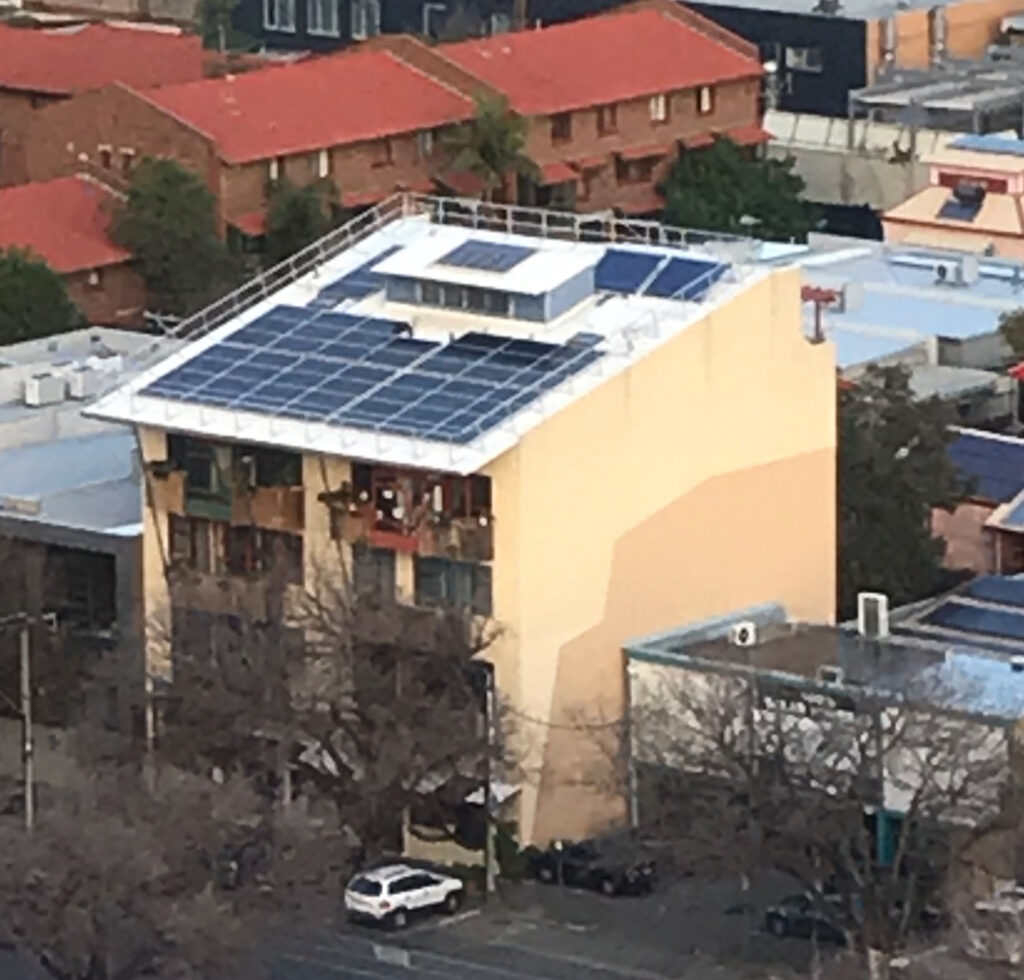
Instead DQ came up with a clever solution of utilizing a large scissor-lift in our inner courtyard, well away from traffic and other hazards.
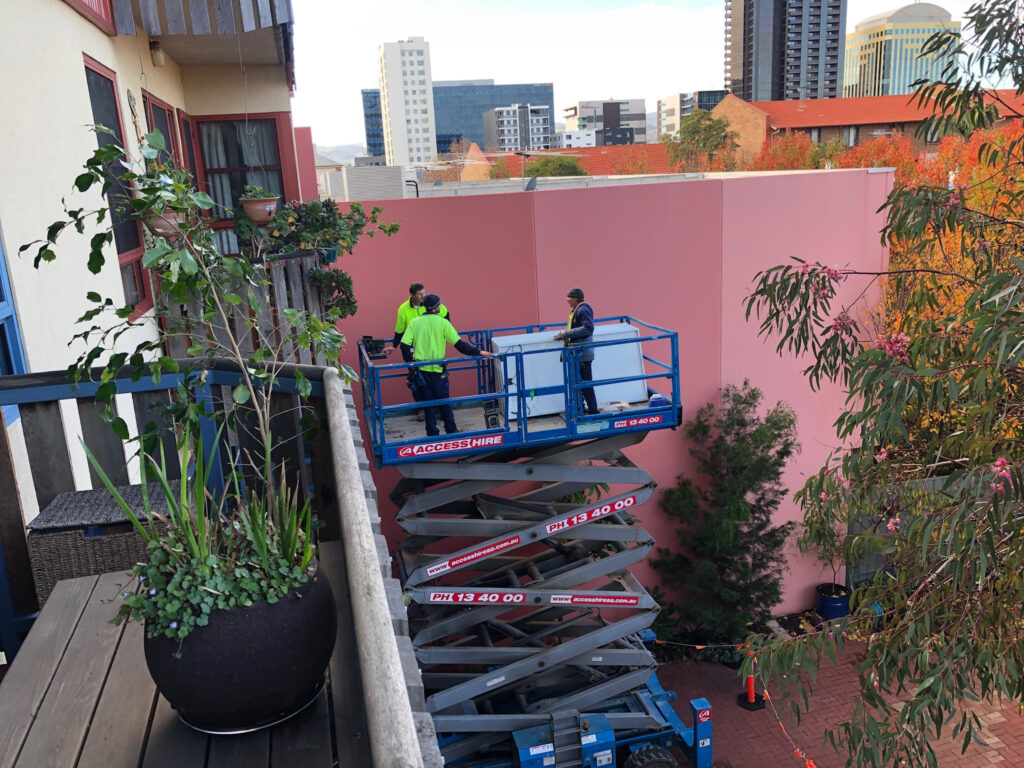
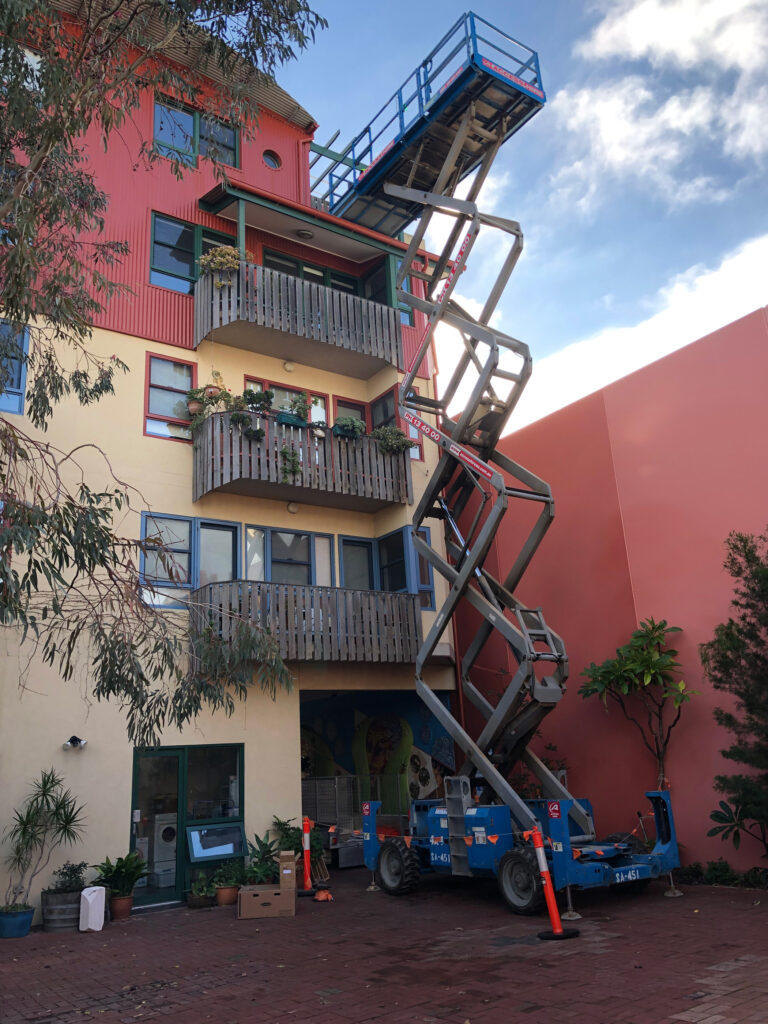
We selected high performance PVs to optimise power production from our limited roof area:
- 21kW total from 52 x LG Solar 405W Neon 2 72 Cell PVs (25 year product and performance warranty)
- Fronius SYMO 20.0-3-M WiFi inverter (real-time online monitoring and analysis at solarweb.com)
The 405W PVs were not yet available in Australia, so DQ arranged a special import for our job.
DQ Electrical completed the installation very efficiently in June 2019.
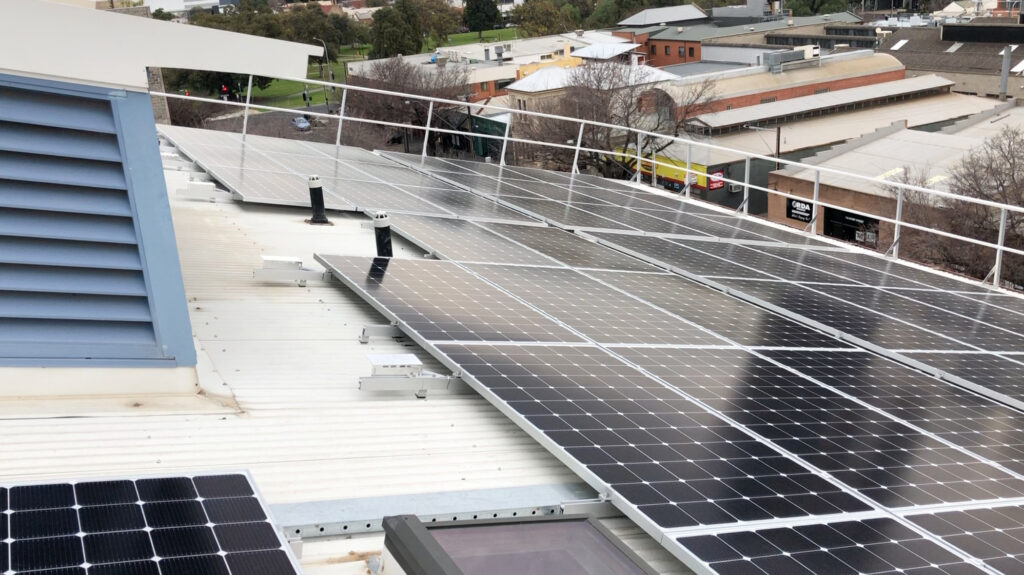
We’ve been delighted with performance which has been running at about 15% higher than pre-install estimates.
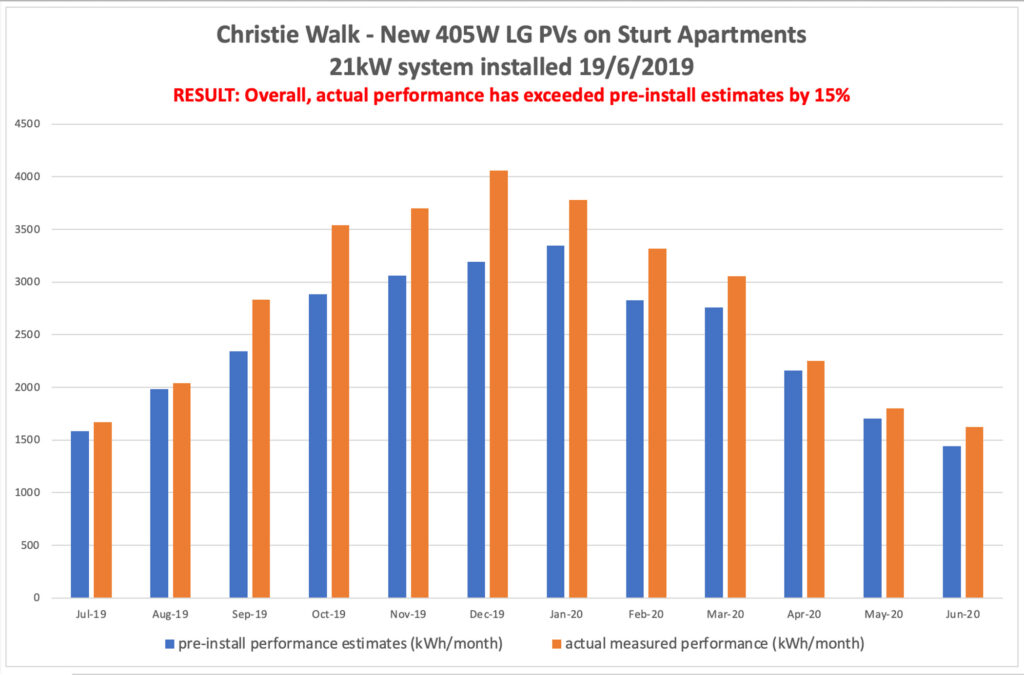
Some other options we’d considered
Along the way we’d considered many options before deciding on the PV upgrade. Prime candidates included:
- RidgeBlade horizontal wind turbines – The windy ridge-line of the apartment block was ideal for this, and the turbines would provide us with some much-needed extra power generation overnight and in winter.
- But mechanical noise is a major issue in apartment blocks. Unless each apartment is acoustically insulated from other apartments, and from the main building structure, noise transmission can cause serious concerns. Because the turbines would be running overnight, sleep disturbance would be a significant risk, despite the damping of the RidgeBlade mounting system.
- If we had a shed roof well away from any bedrooms and living areas, RidgeBlade would be a great solution, but on a high-density site such as our, it was considered inappropriate.
- More information is available from RidgeBlade.
- Printable solar cells – These long strips of 30cm wide printed film (organic photovoltaics or perovskite photovoltaics) could be fixed to the eastern and western walls of our apartment block, boosting our power generation at the early morning and late afternoon peak power-usage periods.
- The technology is very promising, but unfortunately is still at the pilot-scale of development.
- We don’t have funds available for risky developments with an uncertain lifespan, though we could certainly be a test site if the CSIRO or a university had research funds available to cover the cost of the installation.
- Whilst the printed film strips could be readily stapled to our walls, access at height would be expensive, probably involving a crane and road closures.
- It’s certainly a technology to watch as researchers improve the materials and production processes to increase efficiency. More information is available on the CSIRO site and the University of Newcastle Centre for Organic Electronics.
- Passive solar trackers – These smart PV mounting systems ensure the PV modules face the sun throughout the day.
- Traditionally, solar trackers use electric motors to move the PV mount to the correct direction.
- Instead, passive solar trackers use natural warmth from the sun to move fluid from one side of the mount to the other, and gravity moves the mount to keep the PVs aligned towards the sun.
- This offers higher efficiency solar power collection, particularly in confined places.
- One distributor of passive solar trackers claims up to 42% extra power yield can be achieved, but we weren’t able to verify that with sufficient confidence to justify the extra structural cost of mounting the tracker on our Christie Walk Sturt Apartments roof.
- However, we’ll keep it in mind for a subsequent project on the rooftop garden of our other apartment building, the Christie Walk Garden Apartments, where available roof-space is very limited.
- More information is available on the WA Solar Supplies site and internationally on the Zomeworks Corporation site.
Lessons learnt along the way:
- It pays to hire installers with a very strong track record; though their initial quote may be more expensive, they will carefully consider best options for each particular job and will provide a fixed quote. The finished job may well end up being cheaper than cut-price options anyway, due to the attention to detail and careful installation work done by real professionals.
- Similarly, it pays to pay extra for premium PVs; performance will match expectations, if not better.
- Our inverter (in a plant room on the 4th floor) is a considerable distance from the ground floor switchboard. DQ installed very heavy cable down from the inverter to minimise power losses.
End of 2019 Carbon Emissions Summary
- Baseline at end of 2018 = 46.5tCO2-e annually (Refer: Episode 3 – Evacuated tube solar hot water boosters)
- Abatement project 2019 (Major PV upgrade) = 18.1tCO2-e reduction.
- Annual emissions remaining at end of 2019 = 46.5 – 18.1 = 28.4tCO2-e. That’s a huge improvement on the 50tCO2-e emissions from our site just two years ago.

You can continue reading of our adventure with Episode 5 – Finalist – Carbon Neutral Adelaide Awards.
It’s part of our special series:
Aiming beyond NetZero at Christie Walk – Adventures with an environment-conscious inner-urban community.


Leave a Reply